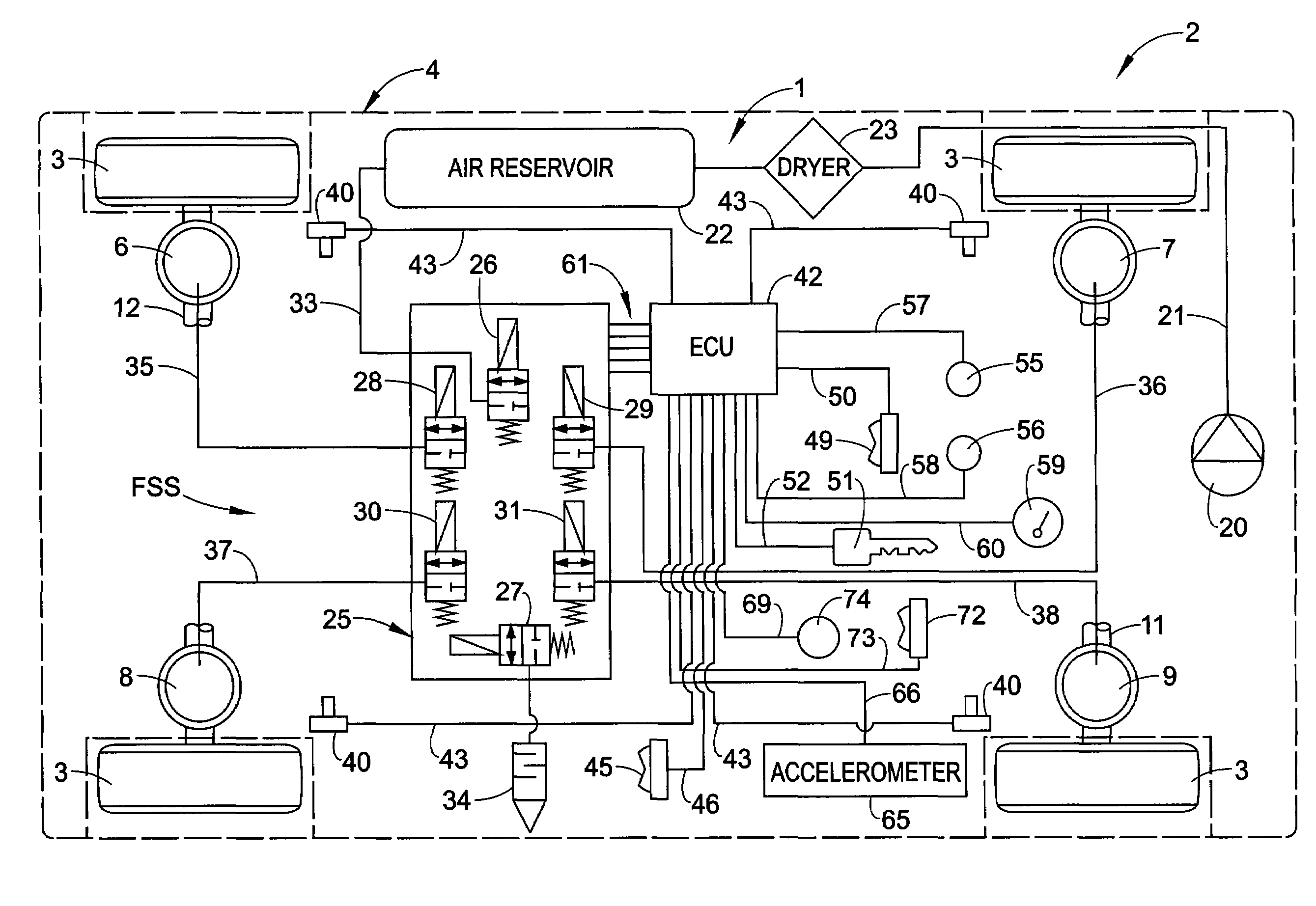Method and system for aligning a stationary vehicle with an artificial horizon
a stationary vehicle and artificial horizon technology, applied in the direction of resilient suspensions, vehicle components, transportation items, etc., can solve the problems of only being able to level the vehicle, using hydraulic jacks is not permitted, and the chassis cannot be positioned relative to the axles, so as to reduce the depletion of pressurized fluid and minimize additional work
- Summary
- Abstract
- Description
- Claims
- Application Information
AI Technical Summary
Benefits of technology
Problems solved by technology
Method used
Image
Examples
Embodiment Construction
[0032]It is to be understood that the term chassis, as recited herein, generally refers to the sprung mass of the vehicle, which typically includes one or more of the components supported on the fluid suspension members. This can include, but is not limited to, a frame, a subframe, a floor and / or a body of the vehicle, for example. Additionally, the terms level, leveling and the like as used herein, such as in the term “horizon leveling,” for example, are not intended to be in any way limited to horizontal or vertical leveling. Rather, such terms refer to substantial alignment with a predetermined datum regardless of the orientation of the predetermined datum.
[0033]FIG. 1 is a diagrammatic representation of the horizon leveling system of the present invention which is indicated generally at 1, and illustrated as being used on a vehicle 2, such as an RV, for example. However, system 1 can be used on other types of vehicles such as travel trailers, over-the-road truck trailers, ambula...
PUM
 Login to View More
Login to View More Abstract
Description
Claims
Application Information
 Login to View More
Login to View More - R&D
- Intellectual Property
- Life Sciences
- Materials
- Tech Scout
- Unparalleled Data Quality
- Higher Quality Content
- 60% Fewer Hallucinations
Browse by: Latest US Patents, China's latest patents, Technical Efficacy Thesaurus, Application Domain, Technology Topic, Popular Technical Reports.
© 2025 PatSnap. All rights reserved.Legal|Privacy policy|Modern Slavery Act Transparency Statement|Sitemap|About US| Contact US: help@patsnap.com



